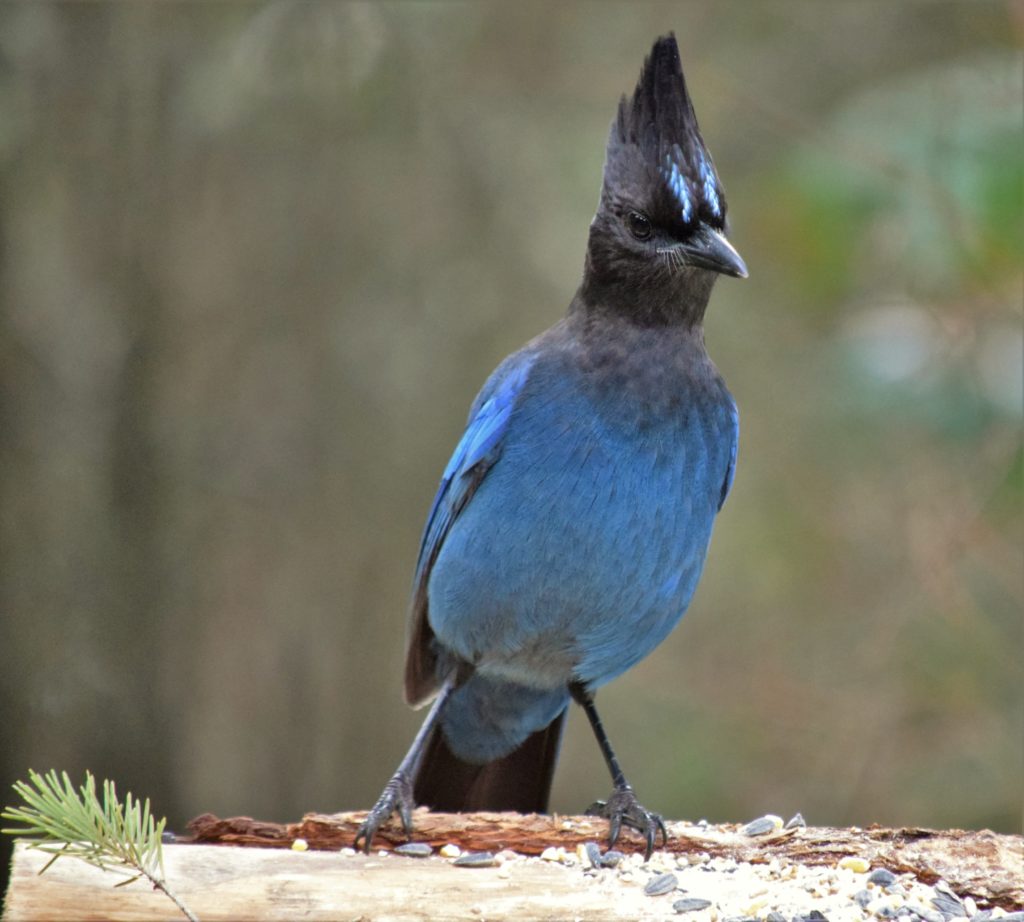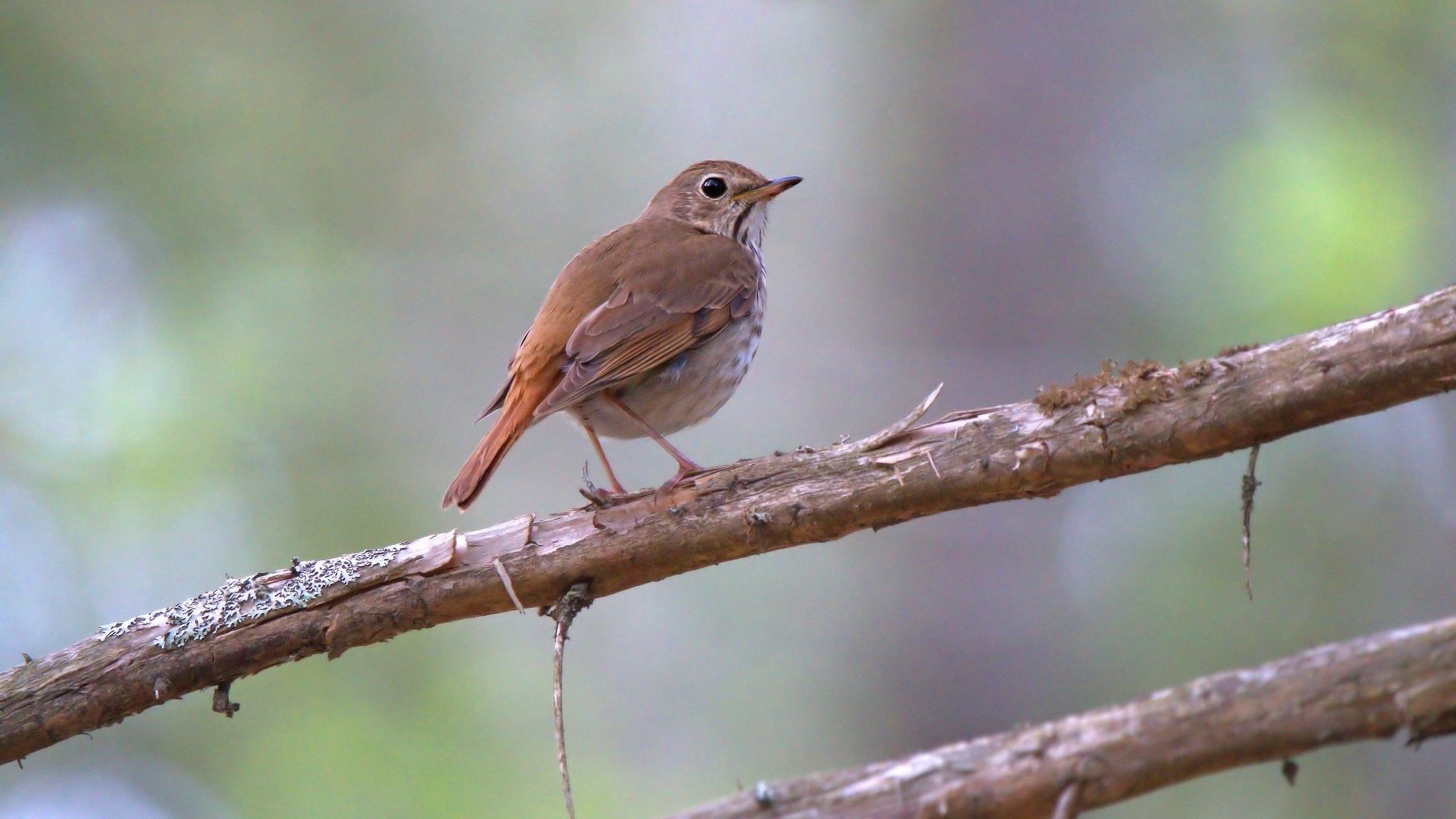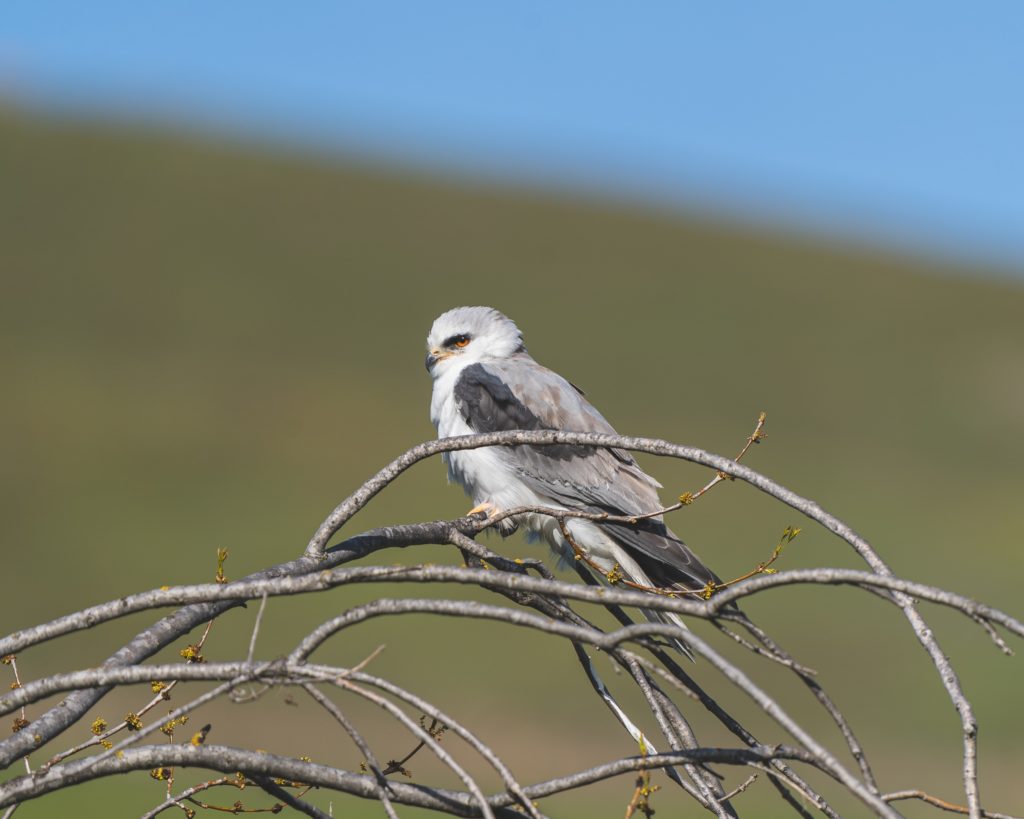California is a birdwatcher’s paradise. With more birds recorded in this state than any other, California is uniquely capable of delivering incredible birdwatching experiences. More than 660 distinct bird species have been recorded in California. This is undoubtedly due to the incredible diversity of habitats that the so-called “Golden State” has to offer. From mountains to deserts to redwood forests to endless stretches of breathtaking coastline, Northern California is an unmissable hotspot for birds of all kinds.
In this guide, we’ll cover:
- Why you should try birdwatching in NorCal.
- What birds Northern California has to offer, including some of my personal favorites.
- Some of the best Northern California birdwatching hotspots and destinations to help you round out your life list.
- When to go birdwatching in NorCal.
- The gear you need to bring to have the best birdwatching experience.
Because California is too vast to explore in one trip, this article will serve as a birdwatching guide for the Northern half of the state. Be sure to check out our guide to birdwatching in Southern California as well!
Northern California has an impressive array of birds, with many beautiful parks and wildlife areas from which to view them. In this article we will explore the best locations for birdwatching in Northern California, as well as the amazing birds that you can expect to see, the best seasons to spot them, and the essential things to bring with you on your birdwatching excursion.
Why Go Birdwatching in Northern California
Northern California is rich with wildlife. One of the biggest draws for birdwatchers is that, in a single weekend, you could easily spot some brush-dwelling birds in a flat sun-soaked valley, look for Mountain Chickadees in the forested peaks of Northern California’s mountain ranges, and finish the trip by watching plovers and other shorebirds on the rocky beaches of the Pacific Ocean.
Although it may be a bit ambitious to squeeze so many outings into such a short time, the unique thing about Northern California is that there are zones where all of these different landscapes are only an hour or two apart via car.
In addition to the availability of so many diverse and beautiful landscapes, California offers some of the most beautiful and diverse bird populations around. The weather in Northern California varies wildly by climate but is generally mild all year long.
Outside of the mountains, it rarely snows over most of NorCal, and although the summer heat is unforgiving inland, along the coastline summers are usually pretty pleasant. So, a dazzling array of birds are attracted to Northern California be it as seasonal visitors escaping harsher climates or as permanent residents prospering from the relative lack of extreme seasonal weather changes. In short, there are an abundance of birds in Northern California because Northern California is an excellent place for birds to live.
Birds of Northern California
In this section, we’ll go over just a few of the more memorable birds that you can find in Northern California. There are far too many birds to name, so these are just some highlighted examples.
Related Articles:
Steller’s Jay
Although they are not exceptionally rare or particularly novel to most birdwatchers, Steller’s Jays are unique and lovely little inhabitants of Northern California. They are brilliant blue corvids who usually have a black head and crest. Although they can be found in parks and backyards, the best places to spot Steller’s Jays are the mountainous regions of the Pacific coastline.
Here, Steller’s Jays have a unique variation to their markings. In Northern California, the typically black crest of the Steller’s Jay, which can vary depending on location, has bold blue streaks.

Steller’s Jays love peanuts and will readily visit feeders within their natural range if peanuts are offered. They are beloved inhabitants of the Santa Cruz mountains, and the entire Sierra Nevada mountain range. Vacationers to scenic Lake Tahoe are often surprised by the brazenness of the Steller’s Jays that frequent campsites and beaches.
I often recommend Steller’s Jays as an easy life list addition for beginner birdwatchers or newcomers to California. They are easy to spot, gregarious, but very rewarding.
Hermit Thrush
Hermit Thrushes are secretive songbirds credited by some as the most beautiful singers in the world of birds. They are medium sized brown thrushes with dappled markings on their breasts and bellies. Though they are present across the United States, most states only get to enjoy them as seasonal visitors.
Certain areas of Northern California hold the distinct honor of being one of a precious few regions where Hermit Thrushes are present year-round, though, for most of NorCal, these birds move throughout the state during the year.

The Golden Gate Audubon society suggests that Hermit Thrushes are often found in the San Francisco Bay Area during the winter months.
The range of the Hermit Thrush in Northern California often overlaps with the very similar looking Swainson’s Thrush. These two usually must be distinguished by minute details. Beginner birdwatchers might find it difficult to distinguish between the two, but keep at it and you’ll get there!
White-tailed Kite
Distributed along a narrow strip of Western California, the White-tailed Kite is a beautiful raptor and a personal favorite of the author. Languidly flapping wings and long outstretched legs accompanied by a “pewing” cry announce the presence of a White-tailed Kite overhead. California is the best state to spot these birds, and in Northern California they are commonly found hovering over grasslands and roosting in tall trees.

Certain areas boast White-tailed Kites as common suburban residents. Contra Costa County in the San Francisco Bay Area has a robust population of these exquisite hunters. In the summer months, look to prairies, grassy fields, and agricultural land for White-tailed Kite sightings.
These are some of my favorite raptors to watch because they are easy to identify (curse you accipiters for looking so similar!) and surprisingly sociable. They’ll often choose a spot to perch and eat in the open and, if you’re as lucky as I’ve been, you might even catch them feeding their fledglings in the open if your timing is good.
Western Yellow-billed Cuckoo
Endangered and rapidly declining, the Western Yellow-billed Cuckoo is one of the more difficult Northern California birds to spot. Western Yellow-billed Cuckoos thrive in riparian habitats and favor cottonwood and willow trees. They are medium-sized brown birds with distinctive yellow bills. In recent years, habitat degradation has led to a dramatic decline in Western Yellow-billed Cuckoo populations.
Western Yellow-billed Cuckoos are often found along the Sacramento River which flows from the Klamath mountains through Sacramento before arriving at the San Francisco Bay. Along this river, birdwatchers wishing to spot these birds should pay close attention to cottonwoods and willows.
Other Birds to Look For in Northern California
If I gave a detailed rundown of every amazing California bird, we’d be here all day. Probably even longer than that! So here are just a few more noteworthy birds I think you should know about before you visit NorCal. Trust me, there are many many more than I’ve listed here.
California Quail: This is California’s state bird so it deserves a mention. Look for quails leading large broods of chicks through suburban and rural areas. They like brushy and hilly areas, but I’ve seen them hang out on lawns too.
California Condor: The California Condor is a living legend that we very nearly lost. It is one of the rarest birds in the world, but its comeback has given a lot of people hope. These birds are so rare that you’ll have to rely quite a bit on luck if you hope to spot one, but they still belong on this list!
California Seabirds and Shorebirds: This list would be a failure if we didn’t mention the coastal birds that make California so special. The problem is, I can’t choose which ones to highlight. From Curlews to Godwits to Avocets to Terns and Gulls to Pelicans, California has such an incredible diversity of sea and shorebirds that an inland birder might balloon their life list with just one visit.
Best Locations for Northern California Birdwatching
As with the previous section, it is impossible to cover all that Northern California has to offer. Here we will cover just a few of the best places to birdwatch in NorCal. Rest assured that throughout the region there are dozens and dozens of birdwatching spots including state parks that draw immense numbers of tourists and hidden gems frequented only by locals.
Elkhorn Slough Reserve
The Elkhorn Slough has been designated as a Globally Important Bird Area by the American Bird Conservancy. Perhaps stretching the definition of “Northern” California, this incredible stretch of Central Californian salt marshes, estuaries, and coastal wetlands is home to an amazing array of wildlife.
Southern Sea Otters congregate in the waters that snake their way inland from the Monterey Bay, but the true crowning glory of the Elkhorn Slough is the over 340 species of birds that have been identified there. Shorebirds are a particular specialty of the Elkhorn Slough and it boasts populations of threatened Snowy Plovers. This ground nesting species have suffered declining numbers due to trampled nests and interference by humans and dogs. The Elkhorn Slough offers a protected place for the Snowy Plover to reproduce safely.
Near the Elkhorn Slough is Monterey Bay itself. A birder wanting to get up close to a number of shorebirds should consider a visit to the Monterey Bay Aquarium. This incredible institution is a leader when it comes to wildlife research and conservation projects. The Monterey Bay Aquarium has a wonderful walk-in aviary full of shorebirds that allows visitors to come incredibly close to these animals.
Alcatraz Island
Alcatraz Island is infamous for its defunct prison which once housed famous figures like Al Capone and Robert Franklin Stroud, the so-called “Birdman of Alcatraz.” Stroud’s interest in birds is one small piece of a much larger portrait in which the island of Alcatraz is truly an island of birds.
For one thing, Alcatraz Island was actually named for the sea birds that lived there long before humans ever interfered. Alcatraz means “seabirds.” This name still holds true to this day. Though most tourists come to view the prison facilities, the island houses breeding colonies for a number of sea birds. In most cases, sea birds nest in inaccessible cliff faces. Alcatraz is unique in that humans can actually get a pretty close look at the nesting sites of these birds.
Alcatraz Island houses, among many other species, Pigeon Guillemots, Brandt’s Cormorants, Double-crested Cormorants, Pelagic Cormorants, Black-crowned Night-Herons, Snowy Egrets, and Western Gulls. In the late winter months these birds can be observed nesting in great numbers. It has recently been discovered that there may even be a pair of Peregrine Falcons breeding on Alcatraz Island.
Yosemite National Park
Yosemite National Park is an excellent birdwatching destination ripe with songbirds. The aforementioned Steller’s Jay is a common Yosemite favorite as are American Robins, Mountain Chickadees, and Dark-eyed Juncos. Yosemite boasts a recorded 262 bird species. Yosemite sees a variety of colorful migratory visitors throughout the year.
Some of Yosemite’s less common offerings include the American Dipper, the recently identified Yosemite Great Grey Owl, the Pine Grosbeak, the Black-backed Woodpecker, and the Sooty Grouse. Like the Elkhorn Slough, Yosemite has also been designated as a Globally Important Bird Area by the American Bird Conservancy.
Best Seasons for Northern California Birdwatching
One of the great joys of birdwatching in Northern California is that there is no true “off season.” Autumn and spring are fantastic for watching the migratory birds that travel along the Pacific Flyway migration route, but summer and winter offer unique opportunities to observe non-migratory residents.
When it comes time to choose a season for a Northern California birdwatching outing, the most important thing that you should do is set goals for what sorts of birds you’re looking to see. Then, you can determine where and when you’ll have the best shot at spotting them.
The best season for watching migratory birds is always going to be during a big migration, but winter birdwatching is fantastic if you like feeder watching. Many birds become more interested in bird feeders when the weather cools and food begins to become more scarce.
Packing for Northern California Birdwatching
On any birdwatching outing, the items that you pack can be essential factors in determining how successful, enjoyable, comfortable, and safe your experience is. Here are a few of the items that should be included on your list for a Northern California birdwatching trip.
- Sunscreen: California can get quite hot, and even in the colder seasons the sun can cause extensive skin damage. Pack sunscreen to protect your skin and stay comfortable on your trip!
- Water: Water is an absolute necessity for outdoor recreation of any kind. A reusable thermos will help you stay hydrated and keep the birds safe from the dangers of single-use plastics.
- Insect Repellent: Mosquitoes and ticks spread dangerous diseases. Insect repellent can help prevent irritating and potential harmful insect bites.
- Weather Appropriate Attire: Northern California has many different climates, so what you wear will vary depending on where you plan to go. Research the weather before planning your trip to ensure that you have sufficiently prepared.
- Binoculars: No birdwatching outing would be quite the same without binoculars. Binoculars make the difference between a blur in the trees and a breathtaking sighting.
- Writing Utensils: Many birdwatchers find that taking notes can greatly improve their accuracy at identifying sightings and can be a generally rewarding addition to the process of birdwatching.
- A Field Guide: Field guides are incredibly useful, especially when cellular service is spotty or uncertain. Be sure to look into regional field guides which often provide a much more focused and specific look at the birds of the region.
Conclusion
Birdwatching in Northern California is an incredibly enriching experience. The rugged coastline of California hosts an unparalleled bounty of seabirds, and the forests and plains that blanket the region are rich with birds of all kinds.
Although I highly recommend the above mentioned locations, as a born and raised Northern Californian I have it on good authority that, even in the unlikeliest of locations, in NorCal an incredible birdwatching experience is never too far away. Along the coast there are unknown beaches galore, in the more inland suburbs there are deltas, marinas, farmlands, and little oak forests. Even in the cities, falcons nest atop skyscrapers and corvids swoop low to make crafty use of scraps and discarded waste.
If there is one thing about my home state that I love above all else it is that Northern California is truly a paradise for birds, and, of course, a bird’s paradise is a birdwatcher’s paradise.
More Articles to Check Out:

